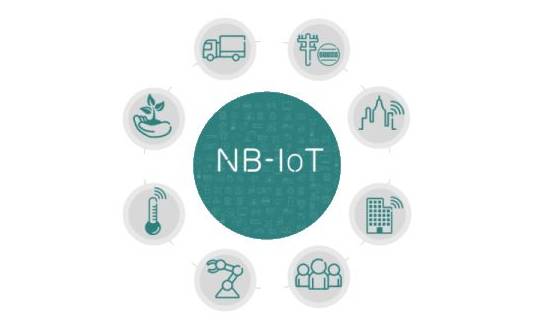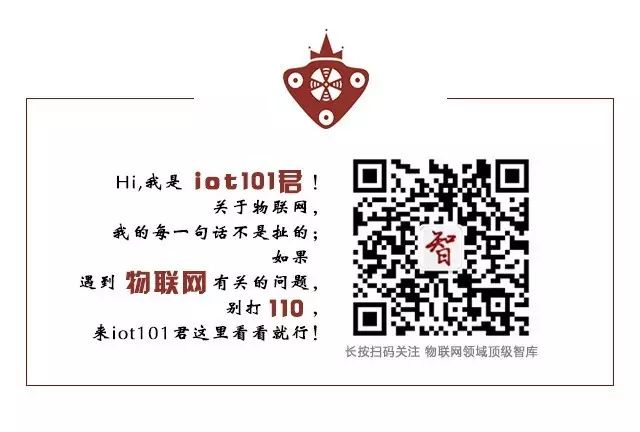
Source: Communication World
Author: He Tingrun
IoT Think Tank Compilation and Release
Please indicate the source and origin when reprinting
—— [Introduction] ——
Regarding NB-IoT, the industry’s focus has shifted from competing for standards and technological application dominance to integrating the industrial chain and building platform capabilities. However, the issue of wireless environment security in the perception layer during the large-scale deployment of NB-IoT has been overlooked by the industry, and there are currently no feasible solutions or means to address it.

The Perception Layer of NB-IoT Large-Scale Deployment is a “Disaster Area” for Radio Environment Security
Due to the fact that NB-IoT in China uses authorized spectrum after the reallocation of the second-generation mobile communication system (2G) frequency bands (800MHz and 900MHz), the industry believes that NB-IoT enjoys national radio environment security protection similar to mobile communication. This is not unfounded. China’s radio management and monitoring capabilities have been developed over decades, forming a spectrum monitoring system that covers cities above the county level across the country in the ultra-short wave frequency band (300MHz-3GHz, extending to 6MHz in developed areas), effectively ensuring the safety of radio services, including mobile communications. However, the radio security protection for mobile communications mainly focuses on monitoring radio interference from mobile communication base stations, such as monitoring and combating illegal base station activities over the years to protect the legitimate rights and interests of mobile users. To date, there has been no establishment of facilities and capabilities to monitor user-end interference.
In the architecture of NB-IoT, the weak point of radio security mainly lies in the uplink of the perception layer composed of RFID systems and wireless sensors. In the relevant standards for NB-IoT, the security measures set for RFID mainly include access control, identity authentication, and data encryption; the security mechanism for wireless sensors involves effective key management and employs security technologies such as secure routing and intrusion detection. However, due to the large number of short-range, low-power radio devices used in the NB-IoT network environment, the opportunities for RFID and sensors to suffer external radio attacks will significantly increase, leading to new interference and resulting in an increasingly complex airborne electromagnetic environment. Moreover, the phenomena of self-interference and mutual interference in the NB-IoT radio environment will also be quite severe.
The aforementioned electromagnetic interference cannot be eliminated through the internal security measures of NB-IoT, and existing security measures are insufficient to ensure the safety of RFID and wireless sensor networks.
At the same time, the radio monitoring system, which primarily ensures base station security, finds it difficult to play a role in the RFID and wireless sensor networks of NB-IoT. It is no exaggeration to say that under such circumstances, the RFID and sensor networks of NB-IoT have lost the ability to perceive and resist radio environment interference, becoming a “disaster area” for radio environment security during the large-scale deployment of NB-IoT. It is evident that while the use of authorized spectrum in NB-IoT has improved certain anti-interference capabilities, it does not effectively eliminate the threats posed by the deteriorating radio environment at the perception layer.
Legal and Technical Means to Ensure NB-IoT Radio Security Urgently Need Revision and Enhancement
Ensuring the radio security of NB-IoT, especially for the low-power-centric perception layer, currently lacks legal basis.
Article 27 of the revised “Radio Management Regulations of the People’s Republic of China”, which came into effect on December 1, 2016, stipulates: “Setting up and using radio stations must apply to the radio management authority for a radio station license, except for the setup and use of low-power short-distance radio stations specified by the national radio management authority.” According to relevant statistics, by the end of 2016, the number of radio stations that had obtained licenses nationwide reached 4.4346 million (excluding military radio stations and civil radio stations managed without a license as per regulations), among which public mobile communication base stations numbered 3.0756 million. This indicates that low-power short-distance radio stations, including those in the NB-IoT perception layer, have not entered the national registration and management scope, and the resulting changes in the radio environment have also been excluded from relevant radio monitoring responsibilities. Therefore, the existing national ultra-short wave monitoring network (including fixed stations, mobile stations, and handheld devices) does not undertake monitoring tasks for low-power stations. Additionally, neither the 3GPP IoT standard R13 nor relevant ITU resolutions or recommendations address the topics and rules of radio environment monitoring, analysis, and protection for NB-IoT.
From the above analysis, it can be seen that the monitoring and protection of the radio environment primarily focused on the NB-IoT perception layer still lack support and guarantees from international rules and national laws. Implementing management requires new legal definitions that urgently need the attention and resolution of relevant national departments.
In addition to the need for revisions and support from relevant national laws, there are also constraints in terms of the current national radio management functions and the construction of related radio monitoring technical facilities. Although several years ago, the radio management department conducted pilot projects for grid-based radio monitoring, with a grid size covering a radius of 1km in urban areas and 3km in suburban areas at the 900MHz frequency band, this has not been promoted anymore. Furthermore, the national radio management’s “13th Five-Year Plan” proposed the goal of building an intelligent monitoring network, requiring an active discovery capability for unidentified radio signals, with a target of capturing new signals at a rate of no less than 90% (signal-to-noise ratio greater than 12dB, duration greater than 2s), and a modulation identification rate for unidentified signals of no less than 60%. This standard could fully detect and capture low-power interference in the NB-IoT perception layer, providing good technical means for solving radio environment interference and purification in the NB-IoT perception layer.
In summary, researching the radio environment, monitoring technologies, and interference analysis during the operation of NB-IoT, and forming rules and implementation plans for protecting the NB-IoT radio environment is a very urgent task to ensure the safety of the NB-IoT radio environment and fill the gaps.
Currently, the maturity and large-scale deployment and application of NB-IoT are causing significant changes in the connotation and extension of radio management, the characteristics and trends of spectrum resource usage, as well as the constraints and environments of applications.
Faced with new situations and challenges, should we strive to seek new developments in radio management under the NB-IoT application environment? Or should we wait and see until the large-scale explosion of radio environment security issues in NB-IoT? The time left for radio managers is limited.

Previous Hot Articles (Click on the title to read directly):
-
“Understanding Cognitive Computing, Blockchain IoT, IoT Security… Those Who Understand Will Control the Future“
-
“The Government Work Report by Li Keqiang Again Mentions the IoT; Ma Huateng, Li Yanhong, and Dong Mingzhu All Offer Suggestions, IoT May Welcome the Best Opportunity!”
-
“KUKA, ABB, FANUC, Yaskawa, Four Major Industrial Robot Giants Have Already Stationed in the IoT Field“
-
“[Heavyweight] IoT Industry Panorama Report, The First Domestic IoT Industry Two-Dimensional Perspective Panorama Initiated“
-
“A Cartoon Explains: Besides WiFi and Bluetooth, What Can the Recently Popular NB-IoT Do?“
-
“A Cartoon Explains: Behind NB-IoT, What is the LoRa Everyone is Talking About?“
